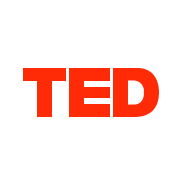The Earth and Moon are like identical twins, made up of the exact same materials -- which is really strange, since no other celestial bodies we know of share this kind of chemical relationship. What's responsible for this special connection? Looking for an answer, planetary scientist and MacArthur "Genius" Sarah T. Stewart discovered a new kind of astronomical object -- a synestia -- and a new way to solve the mystery of the Moon's origin.

Wissenschaft & TechnikTalk
TED Talks Science and Medicine Folgen
Some of the world's greatest scientists, doctors and medical researchers share their discoveries and visions onstage at the TED conference, TEDx events and partner events around the world. You can also download these and many other videos free on TED.com, with an interactive English transcript and subtitles in up to 80 languages. TED is a nonprofit devoted to Ideas Worth Spreading.
Folgen von TED Talks Science and Medicine
136 Folgen
-
Folge vom 13.03.2019Where did the Moon come from? A new theory | Sarah T. Stewart
-
Folge vom 01.03.2019How a new species of ancestors is changing our theory of human evolution | Juliet BrophyIn 2013, a treasure trove of unusual fossils were uncovered in a cave in South Africa, and researchers soon realized: these were the remains of a new species of ancient humans. Paleoanthropologist Juliet Brophy takes us inside the discovery of Homo naledi, explaining how this mysterious ancestor is forcing us to rethink where we come from -- and what it means to be human.
-
Folge vom 15.02.2019The age of genetic wonder | Juan EnriquezGene-editing tools like CRISPR enable us to program life at its most fundamental level. But this raises some pressing questions: If we can generate new species from scratch, what should we build? Should we redesign humanity as we know it? Juan Enriquez forecasts the possible futures of genetic editing, exploring the immense uncertainty and opportunity of this next frontier.
-
Folge vom 29.01.2019Can we solve global warming? Lessons from how we protected the ozone layer | Sean DavisThe Montreal Protocol proved that the world could come together and take action on climate change. Thirty years after the world's most successful environmental treaty was signed, atmospheric scientist Sean Davis examines the world we avoided when we banned chlorofluorocarbons -- and shares lessons we can carry forward to address the climate crisis in our time.
